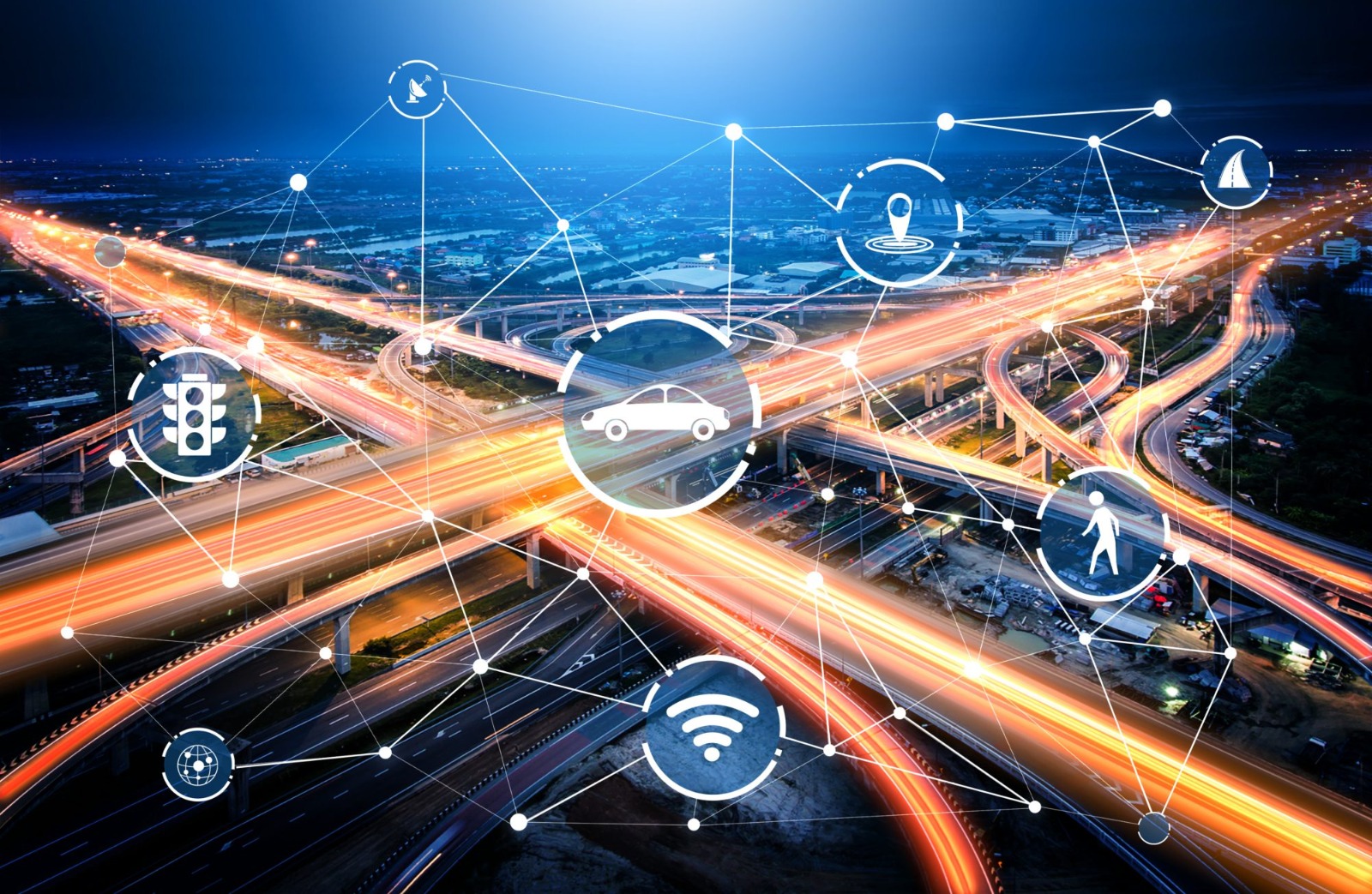
Smart infrastructure in heritage/old cities: integrating modern tech without harming heritage.
Integrating modern technology into heritage and old cities requires a delicate balance between innovation and preservation. Smart infrastructure—ranging from IoT sensors, AI, and GIS mapping to renewable energy and smart mobility—can enhance urban efficiency, safety, and sustainability without compromising historical architecture, cultural identity, or aesthetic charm, ensuring these timeless cities remain functional, resilient, and culturally vibrant for future generations.
✨ Raghav Jain

Introduction
Heritage and old cities are living museums of human civilization—embodying the art, architecture, culture, and community spirit of bygone eras. Cities like Varanasi, Rome, Istanbul, Cairo, and Kyoto have witnessed centuries of evolution, yet continue to function as thriving urban centers. However, these historical urban spaces face mounting pressure: rapid urbanization, rising populations, and the demand for smart, efficient city systems.
“Smart infrastructure” refers to the use of advanced technologies such as sensors, data analytics, and IoT (Internet of Things) to improve urban living. But in heritage cities, modernization poses a complex challenge: How can cities upgrade their infrastructure without damaging the very heritage that defines them? This article explores this balancing act—integrating modern technology while preserving historical character, with global examples, strategies, and future visions.
1. The Challenge of Modernizing Heritage Cities
Heritage cities were not designed for the demands of the 21st century. Narrow lanes, aging utilities, and fragile architecture make infrastructure upgrades a logistical and ethical puzzle.
- Structural Sensitivity: Many heritage buildings are centuries old, built with traditional materials that cannot withstand modern construction vibrations or heavy machinery.
- Regulatory Restrictions: UNESCO and national heritage boards often restrict alterations to protected areas.
- Population Pressure: Increasing residents and tourism lead to traffic congestion, pollution, and waste—problems requiring smart urban solutions.
- Digital Divide: Deploying digital technologies such as 5G or smart grids requires installations like antennas and underground cabling, which can visually or physically disrupt historic zones.
The goal, therefore, is to embed intelligence invisibly—introducing technology in ways that enhance city life without altering its visual or structural identity.
2. Global Examples of Smart Heritage Integration
a. Rome, Italy – Smart Monitoring for Ancient Monuments
Rome’s city administration has installed sensor-based monitoring systems on monuments like the Colosseum to detect micro-vibrations and structural weaknesses. Data from these sensors helps predict and prevent damage from pollution or traffic-induced stress—all without physical alteration of the monument.
b. Kyoto, Japan – Smart Energy in Historic Districts
Kyoto uses solar-integrated roof tiles that blend with traditional Japanese architecture. These tiles preserve the visual integrity of the ancient wooden houses while generating renewable energy, supporting Japan’s carbon neutrality goals.
c. Barcelona, Spain – Smart Lighting in Gothic Quarters
Barcelona introduced sensor-controlled LED streetlights in its Gothic Quarter. These lights adapt brightness based on foot traffic, improving safety while reducing energy consumption—without replacing or damaging the historic lamp posts.
d. Varanasi, India – Digital Sanitation and Traffic Systems
India’s oldest city, Varanasi, is implementing IoT-based waste management and traffic monitoring systems. Smart bins signal when they are full, while GPS-tracked public transport ensures efficient mobility through narrow, congested streets.
e. Istanbul, Turkey – Digital Heritage Mapping
Istanbul employs 3D scanning and digital twins to map ancient sites. This data helps in restoration, urban planning, and disaster preparedness—creating a digital layer of protection for the physical heritage.
3. Principles of Smart Infrastructure Integration in Heritage Zones
Successful integration relies on three guiding principles—Invisibility, Reversibility, and Sustainability.
- Invisibility: Modern technology must blend seamlessly into historical aesthetics. For instance, Wi-Fi antennas can be camouflaged within lamp posts or building facades.
- Reversibility: Any technological installation should be removable without damaging the original structure. For example, temporary mounting systems for smart sensors.
- Sustainability: Technologies must reduce energy use, pollution, and waste—preserving both cultural and environmental heritage.
Additionally, data-driven urban management allows cities to predict problems before they occur—whether it’s traffic congestion, infrastructure strain, or structural decay.
4. Smart Technologies Transforming Heritage Cities
a. Internet of Things (IoT)
Sensors embedded in heritage buildings track temperature, humidity, and vibrations, preventing decay caused by environmental stress. Smart bins, streetlights, and transport systems improve city operations invisibly.
b. Geographic Information Systems (GIS)
GIS tools digitally map heritage structures, underground utilities, and pedestrian flow. They enable “heritage-sensitive planning”—ensuring that new development respects cultural assets.
c. Artificial Intelligence (AI)
AI algorithms analyze historical data, predicting maintenance needs and optimizing tourism flows to avoid crowding in fragile areas.
d. Augmented Reality (AR) & Virtual Reality (VR)
Instead of intrusive signage, AR allows visitors to use their smartphones to view digital overlays—learning history without cluttering real spaces. VR recreates lost monuments or shows reconstructions for education and tourism.
e. Renewable Energy & Smart Grids
Microgrids powered by solar, wind, or geothermal systems provide clean energy without the need for large, visually disruptive power stations.
f. Smart Mobility Systems
Electric shuttle services, pedestrian-only zones, and AI-managed parking systems ease congestion while reducing emissions near sensitive sites.
5. Policy and Governance Frameworks
Modernizing heritage cities requires strong governance models that involve all stakeholders: government, heritage conservationists, technologists, and citizens.
- Heritage Impact Assessment (HIA): A mandatory evaluation before any smart technology deployment.
- Public-Private Partnerships (PPP): Encourage collaboration between civic bodies and tech companies, balancing innovation with accountability.
- Community Engagement: Local residents and artisans must be part of planning to ensure acceptance and cultural continuity.
- International Guidelines: UNESCO’s “Recommendation on the Historic Urban Landscape” provides a framework for balancing modernization and preservation.
6. Benefits of Smart Infrastructure in Heritage Cities
- Preservation through Prediction: Continuous monitoring detects risks like humidity, vibration, or erosion early.
- Enhanced Tourism Experience: Smart apps and AR tours create immersive, informative experiences without physical interference.
- Improved Urban Efficiency: Smart grids, lighting, and waste management systems make cities cleaner and more energy-efficient.
- Economic Growth: Tourism, innovation, and sustainability attract investment while creating jobs for locals.
- Disaster Resilience: Digital mapping and predictive analytics enhance preparedness against earthquakes, floods, and fires.
7. Challenges and Ethical Considerations
While the potential is vast, challenges remain:
- Technological Intrusion: Excessive modernization can dilute authenticity and historical charm.
- Data Privacy: Digital monitoring systems must respect citizen privacy.
- Maintenance Costs: High-tech systems require continuous funding and skilled maintenance.
- Inequality: Smart upgrades may benefit tourist zones more than residential areas, creating urban imbalance.
Ethically, cities must ensure that technology enhances heritage, not replaces it. The soul of the city—its streets, stories, and human interactions—must remain central.
8. The Future: Heritage as a Living Smart Ecosystem
The cities of tomorrow will not be divided into “old” and “new.” Instead, they will function as hybrid ecosystems, where ancient wisdom meets modern intelligence.
Imagine walking through a medieval market where your phone displays centuries-old trade routes, while invisible air-quality sensors protect your health. Or picture an ancient temple whose walls are digitally monitored for microcracks, ensuring it stands for centuries more.
This is not science fiction—it is the new frontier of urban innovation. Smart heritage cities symbolize respect for the past, responsibility for the present, and readiness for the future.
Heritage and old cities are living testaments to human civilization—repositories of memory, identity, and artistry. They are not just tourist attractions but functional ecosystems that have evolved over centuries, continuously adapting to changing times. Cities like Varanasi, Rome, Istanbul, Cairo, Kyoto, and Prague encapsulate the soul of human heritage, yet today, they stand at the crossroads of tradition and technology. As urban populations grow and infrastructure demands rise, the challenge becomes clear: how to integrate modern smart technologies into these ancient spaces without eroding their cultural essence or architectural integrity. Smart infrastructure refers to technologically enhanced systems—like IoT sensors, data-driven traffic management, renewable energy grids, and digital monitoring—that make cities more efficient, sustainable, and livable. However, when applied to heritage cities, these technologies must tread lightly, respecting the physical fragility and aesthetic sanctity of historical environments. For instance, Varanasi, one of the world’s oldest living cities, faces immense pressure from tourism, waste, and traffic congestion. Yet, through the introduction of IoT-based waste management systems, GPS-tracked transport, and smart lighting along the ghats, modernization has been achieved without altering its visual charm. Similarly, Rome has installed vibration and pollution sensors on monuments like the Colosseum to detect micro-level damage that human eyes can’t see, ensuring preservation through prediction rather than reaction. Kyoto, Japan’s cultural heart, has pioneered solar-integrated roof tiles that mimic traditional Japanese designs, thus producing renewable energy while maintaining heritage aesthetics. These examples demonstrate a new philosophy—“invisible innovation”—where technology enhances functionality without overshadowing authenticity.
The integration process, however, is not just technical—it is philosophical. It operates on three guiding principles: invisibility, reversibility, and sustainability. Invisibility ensures that smart devices, such as sensors or antennas, blend into the environment—hidden in lamp posts, rooftops, or walls—to prevent visual intrusion. Reversibility demands that any technological installation can be removed without leaving a permanent mark, a crucial requirement for UNESCO-listed zones. Sustainability emphasizes eco-friendly innovation, where smart grids, efficient lighting, and water management systems reduce environmental impact while preserving the natural and cultural heritage simultaneously. This philosophy extends beyond infrastructure to urban governance. Cities must conduct Heritage Impact Assessments (HIA) before implementing new technologies, ensuring that interventions align with conservation laws. Public-Private Partnerships (PPP) are also vital, as they combine the innovation of tech industries with the accountability of civic institutions. Moreover, community participation ensures cultural continuity. Locals, artisans, and historians must have a voice in decision-making, as they are the custodians of living heritage. Without their involvement, smart cities risk becoming sterile, disconnected spaces—technically advanced but culturally hollow.
Smart technologies are revolutionizing the way we preserve, manage, and experience heritage. The Internet of Things (IoT) enables real-time monitoring of structural health, detecting temperature, vibration, and humidity changes that could threaten ancient buildings. Geographic Information Systems (GIS) map every brick and alley of heritage zones, creating digital twins that guide restoration and urban planning. Artificial Intelligence (AI) analyzes centuries of data to predict decay, manage crowd flow, and even automate maintenance schedules. Augmented Reality (AR) and Virtual Reality (VR) enrich tourism by overlaying digital narratives onto physical sites, allowing visitors to witness the past without intrusive signboards or renovations. Imagine standing before a ruined fort while AR recreates its former glory before your eyes, or exploring a medieval market digitally reconstructed in its original soundscape and vibrancy. Similarly, renewable energy solutions like solar tiles, underground microgrids, and low-emission transport preserve both history and the environment. Smart mobility systems—electric shuttles, pedestrian-only zones, and AI-controlled parking—minimize pollution and protect fragile architecture from vehicular damage. Each of these innovations showcases how the digital age can coexist harmoniously with ancient legacies.
Globally, several cities exemplify this synergy. In Barcelona, the Gothic Quarter uses smart lighting systems that adjust brightness based on movement, saving energy while maintaining historic charm. In Istanbul, 3D scanning and digital mapping preserve Ottoman-era sites, offering a safeguard against earthquakes or human neglect. Amsterdam employs underwater sensors to monitor the structural integrity of its centuries-old canal walls. Meanwhile, in Dubrovnik, drone surveillance prevents overcrowding in heritage streets by redirecting tourists dynamically through data-driven crowd management. These cities prove that modernization need not come at the cost of authenticity. Instead, technology, when used wisely, can act as an invisible guardian of the past.
However, the journey toward smart heritage cities is not without challenges. Excessive technological intrusion can strip cities of their character, turning organic heritage into sterile “museum cities.” The visual pollution caused by exposed devices, the ethical concerns surrounding surveillance, and the risk of prioritizing tourist zones over residential needs all demand careful regulation. Moreover, maintaining smart systems in fragile areas requires skilled labor, constant monitoring, and substantial financial investment—resources that many developing countries may lack. There is also the moral dilemma of data privacy, as the same sensors that protect heritage may also track individuals. Therefore, the ethical implementation of technology—guided by transparency, inclusivity, and cultural respect—is as vital as the innovation itself. The ultimate goal is not to make old cities “modern,” but to make them resilient, self-sustaining, and connected, while retaining their spirit.
The future of heritage cities lies in treating them as living smart ecosystems rather than static relics. The most successful models will integrate digital intelligence into every layer of urban life—water, energy, traffic, waste, and tourism—while keeping technology invisible and reversible. For instance, an ancient temple monitored for structural health through hidden IoT sensors, a medieval alley illuminated by adaptive LED lights camouflaged in antique fixtures, or a historic market using AI-driven crowd control to preserve visitor experience—all illustrate the next chapter of sustainable urban evolution. Through digital mapping and predictive analytics, even disaster resilience will improve, allowing cities to prepare for floods, earthquakes, and fires that could threaten priceless heritage. These hybrid cities will not merely survive—they will thrive, symbolizing humanity’s ability to blend memory with modernity.
In conclusion, smart infrastructure in heritage and old cities is not a conflict between progress and preservation but a collaboration between them. It is about using the precision of technology to protect the poetry of the past. From the ghats of Varanasi to the alleys of Venice, cities across the globe are rewriting their destinies—embracing data without discarding dignity, adopting sensors without losing soul. The true success of smart heritage cities lies in subtlety: the less you see the technology, the more beautifully it works. The smartest cities of the future will not be those built from scratch, but those reborn from history—timeless yet modern, ancient yet alive, where every cobblestone carries memory and every byte carries meaning.
Heritage and old cities are living embodiments of human history, culture, and architectural ingenuity, representing the accumulated memory, artistry, and identity of civilizations over centuries, and yet these urban spaces face unprecedented challenges in the modern era as rapid urbanization, population growth, tourism pressures, climate change, and infrastructure demands threaten to overwhelm their fragile physical and social fabric, necessitating a careful, highly strategic approach to modernization that balances technological advancement with preservation, and the concept of smart infrastructure in heritage cities emerges as an innovative solution to these complex dilemmas, aiming to integrate Internet of Things (IoT) devices, artificial intelligence (AI), data-driven traffic and energy management systems, renewable microgrids, sensor-based structural monitoring, augmented reality (AR), and virtual reality (VR) tools into these urban environments without visually or physically disrupting historical structures, streetscapes, and neighborhoods, and the essence of this integration is based on the principle of invisibility, where technologies are camouflaged within the environment such as sensors hidden in lamp posts or architectural features, antennas integrated into rooftops designed to match historical styles, and smart lighting systems embedded seamlessly into the streets, allowing modern functionalities to operate without altering the city’s aesthetic, coupled with the principle of reversibility, which ensures that any technological implementation can be removed or upgraded without leaving permanent traces, which is crucial for compliance with UNESCO heritage guidelines and national conservation laws, and finally, sustainability forms the third pillar, ensuring that the adoption of modern technologies not only improves efficiency and urban livability but also reduces energy consumption, carbon footprint, and environmental degradation, preserving both the tangible and intangible heritage for future generations, exemplified by global case studies such as Rome, which employs vibration and pollution sensors to monitor structural integrity of ancient monuments like the Colosseum, allowing authorities to predict micro-damage before it escalates, Kyoto, Japan, which integrates solar roof tiles that match traditional wooden architecture to generate renewable energy without disturbing visual harmony, Varanasi in India, where IoT-enabled waste management systems and smart transport solutions manage congested ghats and narrow streets, Barcelona’s Gothic Quarter, which features adaptive LED streetlights that adjust intensity based on pedestrian activity, enhancing safety while conserving energy, and Istanbul, which has implemented 3D scanning and digital twin technologies to create virtual models of heritage buildings for disaster preparedness, restoration planning, and tourism management, illustrating that the combination of digital innovation and heritage conservation is not only possible but also highly beneficial when approached strategically, and the deployment of these smart systems is facilitated by a strong policy framework that includes Heritage Impact Assessments, public-private partnerships, regulatory oversight, and active community engagement to ensure that technological advancements do not alienate local residents or compromise cultural authenticity, while advanced tools like GIS mapping provide precise spatial data of historic zones, underground utilities, and pedestrian flows, enabling city planners to make informed decisions that respect historical patterns and structures, and AI analytics allow for predictive maintenance, crowd management, and optimized urban operations, while AR and VR technologies enable immersive tourism experiences, such as overlaying historical reconstructions on current landscapes, offering educational and cultural insights without requiring intrusive physical signage or construction, thereby protecting both the aesthetic and structural integrity of heritage sites, and smart mobility systems—such as electric shuttle networks, pedestrian-priority zones, AI-assisted parking, and route optimization—mitigate traffic congestion, reduce air pollution, and protect fragile structures from vehicular stress, complemented by renewable energy solutions like solar tiles, microgrids, and low-emission lighting that provide clean, sustainable power while remaining unobtrusive, creating a synergy between technology and tradition, and yet despite these advancements, challenges persist, including technological intrusion risks that could diminish historic charm, ethical concerns regarding surveillance and citizen privacy, high maintenance costs for sophisticated systems, unequal distribution of benefits between tourist and residential areas, and the need for skilled personnel to operate and maintain these technologies, making it essential to ensure that smart infrastructure initiatives are guided by ethical, cultural, and regulatory frameworks, emphasizing that modernization should not replace heritage but rather protect, sustain, and enhance it, and the vision for the future of heritage cities is one of hybrid living systems, where centuries-old streets, markets, and temples coexist harmoniously with invisible sensors, renewable energy grids, AI-assisted management, and AR-enhanced tourism, allowing cities to be resilient against climate threats, adaptable to urban growth, efficient in resource usage, and rich in cultural experience, such that residents and visitors alike can benefit from modern comforts while experiencing the authenticity and charm of the historical cityscape, and in conclusion, smart infrastructure in heritage and old cities is fundamentally about achieving equilibrium between progress and preservation, leveraging digital and energy-efficient technologies to ensure urban efficiency, safety, sustainability, and disaster resilience, while maintaining architectural authenticity, visual harmony, and cultural integrity, ultimately enabling cities to remain vibrant, functional, and historically rich, and this delicate balance demonstrates that the most intelligent and sustainable cities of the future will not necessarily be the newest, but the oldest ones revitalized through subtle, careful, and ethically guided technological interventions that preserve the past while embracing the future, ensuring that history continues to live, inspire, and function as a living part of urban life.
Conclusion
Smart infrastructure in heritage and old cities represents a paradigm shift—modern technology as a tool for preservation rather than destruction. From IoT-enabled monitoring of monuments to AI-powered traffic systems and renewable microgrids, the integration of digital solutions ensures these cities thrive sustainably.
The key is balance: modernization must remain invisible, reversible, and respectful. Rome, Kyoto, Varanasi, and Istanbul demonstrate that innovation and tradition need not be opposites. When guided by ethical governance, smart technologies can empower cities to honor their heritage while embracing progress.
In conclusion, the smartest cities of the future will not be the newest—they will be the oldest ones reborn, where history breathes through innovation.
Q&A Section
Q1:- What does “smart infrastructure” mean in heritage cities?
Ans:- It refers to using modern technologies like sensors, IoT, and AI to improve utilities, transport, and safety in old cities without disturbing their historical architecture or cultural identity.
Q2:- How can technology help preserve monuments?
Ans:- Smart sensors monitor structural health, detecting vibration, humidity, and temperature changes, allowing preventive maintenance before major damage occurs.
Q3:- What are some examples of smart heritage cities?
Ans:- Rome (smart monitoring), Kyoto (solar-integrated roofs), Barcelona (smart lighting), and Varanasi (IoT-based sanitation and traffic systems).
Q4:- Why is invisibility important in heritage tech integration?
Ans:- Invisibility ensures that modern installations do not visually disrupt the historic appearance of buildings or streetscapes, preserving authenticity.
Q5:- What role does community play in modernization projects?
Ans:- Local communities must be consulted to maintain cultural relevance and avoid resistance; their participation ensures sustainability and local ownership.
Similar Articles
Find more relatable content in similar Articles

Data Centers and the Planet: M..
As cloud computing becomes the.. Read More

Wearable Health Sensors: The D..
Wearable health sensors are re.. Read More

Digital DNA: The Ethics of Gen..
Digital DNA—the digitization a.. Read More

Protecting Kids in the Digital..
In an increasingly connected w.. Read More
Explore Other Categories
Explore many different categories of articles ranging from Gadgets to Security
Smart Devices, Gear & Innovations
Discover in-depth reviews, hands-on experiences, and expert insights on the newest gadgets—from smartphones to smartwatches, headphones, wearables, and everything in between. Stay ahead with the latest in tech gear
Apps That Power Your World
Explore essential mobile and desktop applications across all platforms. From productivity boosters to creative tools, we cover updates, recommendations, and how-tos to make your digital life easier and more efficient.
Tomorrow's Technology, Today's Insights
Dive into the world of emerging technologies, AI breakthroughs, space tech, robotics, and innovations shaping the future. Stay informed on what's next in the evolution of science and technology.
Protecting You in a Digital Age
Learn how to secure your data, protect your privacy, and understand the latest in online threats. We break down complex cybersecurity topics into practical advice for everyday users and professionals alike.
© 2025 Copyrights by rTechnology. All Rights Reserved.